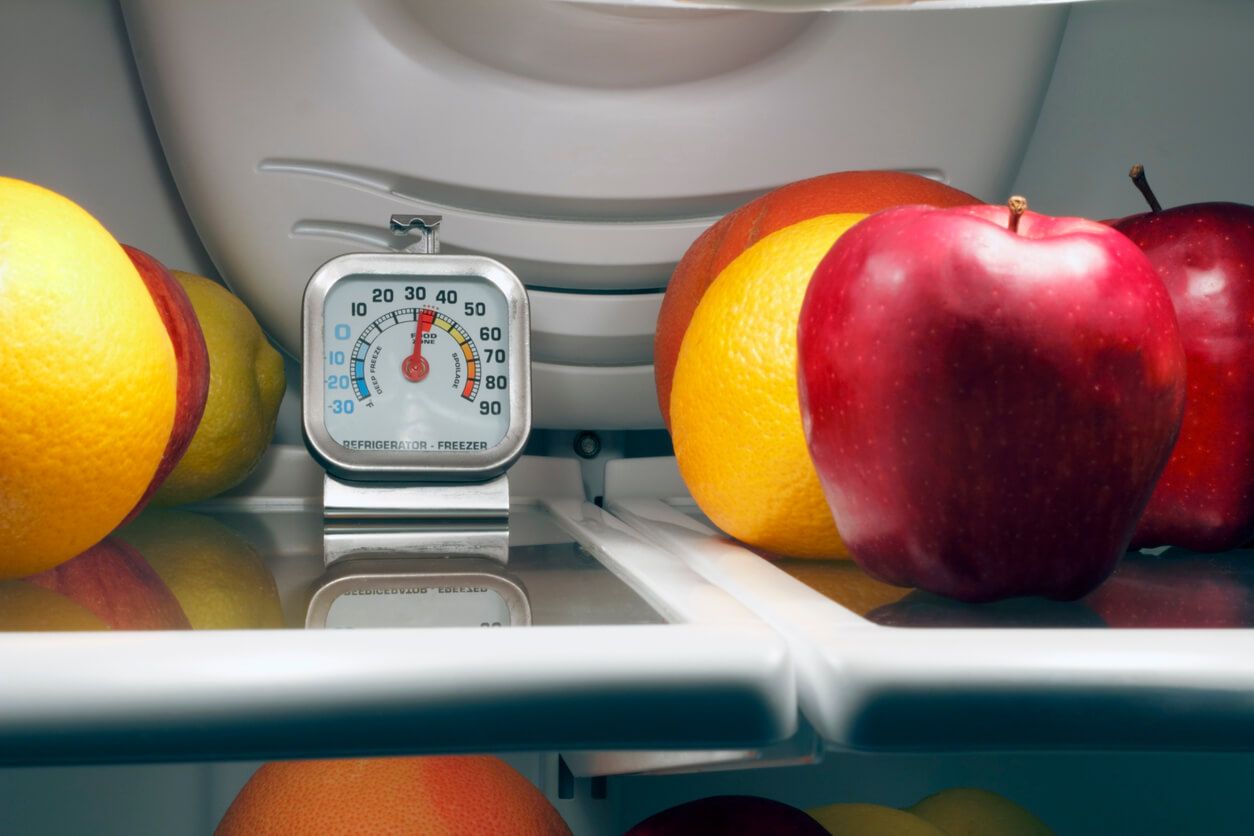Ensuring the ideal temperature in your refrigerator is vital to safeguarding the quality and safety of your food. A fridge thermometer is one of the most effective tools to ensure the optimal temperature. However, it's crucial to use it correctly to get accurate readings.
In this micro-post, we'll discuss some common mistakes to avoid when using a thermometer for your refrigerator. By steering clear of these errors, you can enhance food safety and prolong the shelf life of your perishable items.
Placing the thermometer incorrectly:
One of the primary mistakes people make when using a refrigerator thermometer is placing it in the wrong spot. To obtain an accurate reading, you must position the thermometer in the central area of your refrigerator. Avoid placing it near the door, vents, or close to food items. The goal is to measure the overall temperature of the fridge so find a suitable spot that won't be affected by external factors.
Not allowing the thermometer to stabilize:
Once you've positioned the thermometer correctly, allow it enough time to stabilize and settle into the refrigerator's temperature. Opening the fridge frequently or placing warm items inside can cause fluctuations in temperature. It's advisable to wait at least 30 minutes before checking the thermometer's reading. This way, you'll obtain a more accurate representation of the internal temperature.
Neglecting to calibrate the thermometer:
Periodically calibrating your refrigerator thermometer is crucial for maintaining accuracy. Over time, thermometers may become slightly off, impacting the readings. To calibrate your thermometer, you can use the ice water method. Fill a glass with ice and add water, stirring it well. Insert the thermometer into the mixture, ensuring the sensor is fully immersed but not touching the glass. After a few minutes, the thermometer should read close to 32°F (0°C); if it doesn't, refer to the manufacturer's instructions for calibration guidance.
Failing to clean the thermometer:
Maintaining a clean thermometer is essential for accurate readings. Food residue or dirt can affect performance and lead to inaccurate temperature readings. Regularly clean your thermometer with a damp cloth and mild soap. Avoid immersing it in water or using abrasive cleaners that could damage it. By keeping the thermometer clean, you'll ensure its longevity and reliable performance.
Ignoring temperature fluctuations:
Refrigerators experience temperature fluctuations throughout the day due to the compressor cycling on and off. It's important to be aware of these changes but not unnecessarily panic. Instead, focus on the average temperature range rather than minor fluctuations. Suppose you consistently observe a significant deviation from the desired temperature range. In that case, it might indicate an issue with your refrigerator that requires attention.
Not acting upon abnormal readings:
One of the primary purposes of using a refrigerator thermometer is to detect any temperature abnormalities. If you notice consistent readings above or below the recommended temperature range, it's crucial to investigate and take appropriate action. Excessively high temperatures can lead to spoilage and foodborne illnesses, while shallow temperatures can impact the quality of your food. Consider adjusting the temperature settings or contacting a professional for assistance in such cases.
Conclusion:
Using a thermometer to monitor the temperature of your refrigerator is an effective way to maintain food safety and extend the lifespan of your perishable items. By avoiding the common mistakes outlined in this micro-post, such as improper placement, failure to calibrate, neglecting cleanliness, ignoring fluctuations, and disregarding abnormal readings, you can ensure accurate temperature monitoring and create an optimal environment for your food. Remember, a well-functioning refrigerator contributes to healthier and safer eating habits for you and your family.
Thanks for reading!
Is your refrigerator running at the optimal temperature? Discover the best thermometers that guarantee precise temperature monitoring for your fridge, ensuring your food stays fresh and safe. Explore our top fridge thermometer recommendations and take control of your refrigerator's performance!



